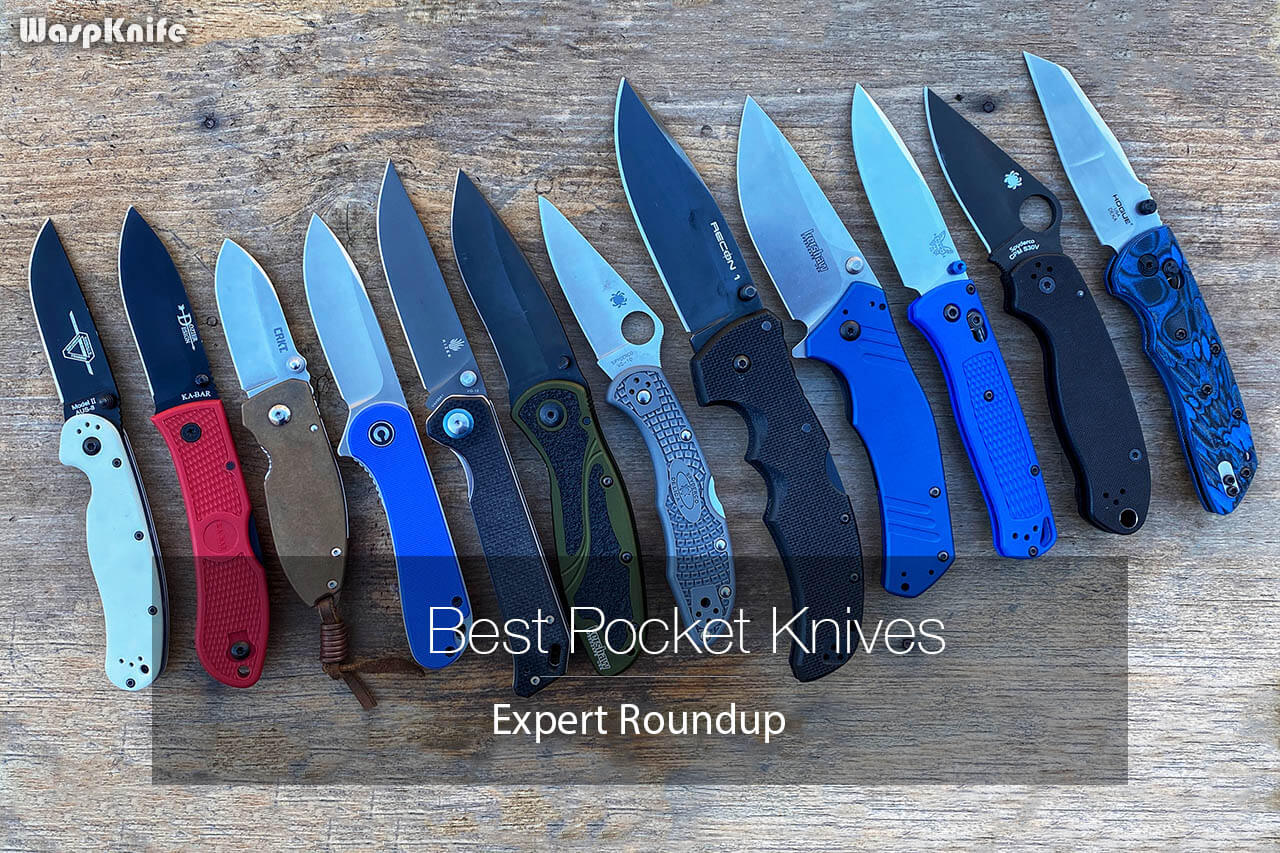Picking out the best pocket knife in this day and age can be extremely time-consuming and a huge headache if you don’t know what to look for.
In the two decades I have been collecting knives, I have owned close to 1,000 knives. I am still an avid collector, but I have found what works and what doesn’t through trial and error over the years.
I have compiled a list of some of the top pocket knives you can purchase for your budget and style preferences based on my years of experience with buying, testing, and reviewing different blades.
I own pocket knives ranging from $20 all the way up to $500 and have constructed this guide that I hope is easy to follow to determine what folding knife will fit your needs the best.
Pocket knives range in price, size, blade steel, handle materials, lock type, deployment type, and even color.
After going over my top picks for each budget, I’ll briefly explain the most common features found in modern-day EDC knives so you can decide what materials and features will be best for you.
Best Pocket Knives Of 2024
| Recommended | Best Knife Under | Check on Amazon |
|---|---|---|
| Opinel No. 7 | Best Under $20 | Check Price On Amazon |
| Ontario Rat I | Best Under $50 | Check Price On Amazon |
| Kershaw Blur | Best Under $75 | Check Price On Amazon |
| Spyderco Delica 4 | Best Under $100 | Check Price On Amazon |
| Benchmade Bugout | Best Under $150 | Check Price On Amazon |
| No products found. | Best High-end | No products found. |
1. Ontario Rat I/II: Best Budget Pocket Knife
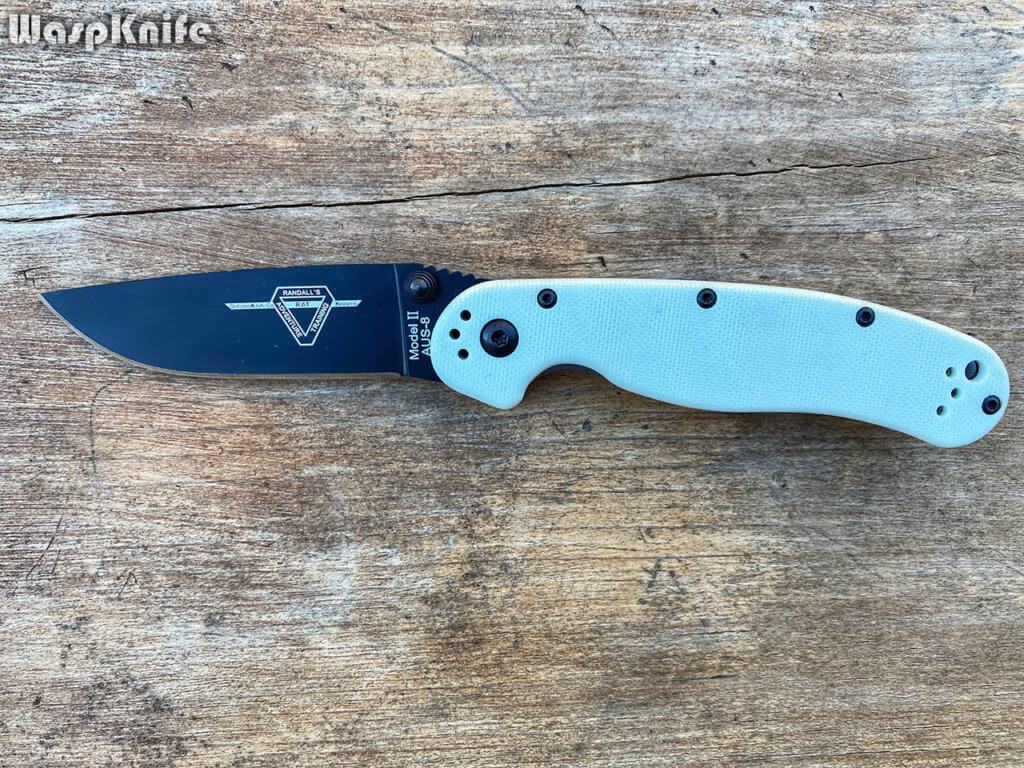
Key Features:
- Durable blade material (AUS 8 and D2 options)
- Four-way reversible pocket clip (tip-up & tip-down, right or left hand)
- Incredible fit and finish for the price
Specs:
The Ontario Rat series has been a mainstay in the everyday carry realm for many years now for good reason. Retailing well under $50 you get two different size options, a multitude of scale colors, and several blade configurations.
The Rat I and II feature the same general specs; the original and larger Rat I is a tad larger for those with larger hands and the newer Rat II is a hair smaller for those who are looking for a durable blade at a more pocketable size.
The Rat I is arguably the best budget EDC folding knife under $30.
2. Kabar Dozier: Lightweight EDC
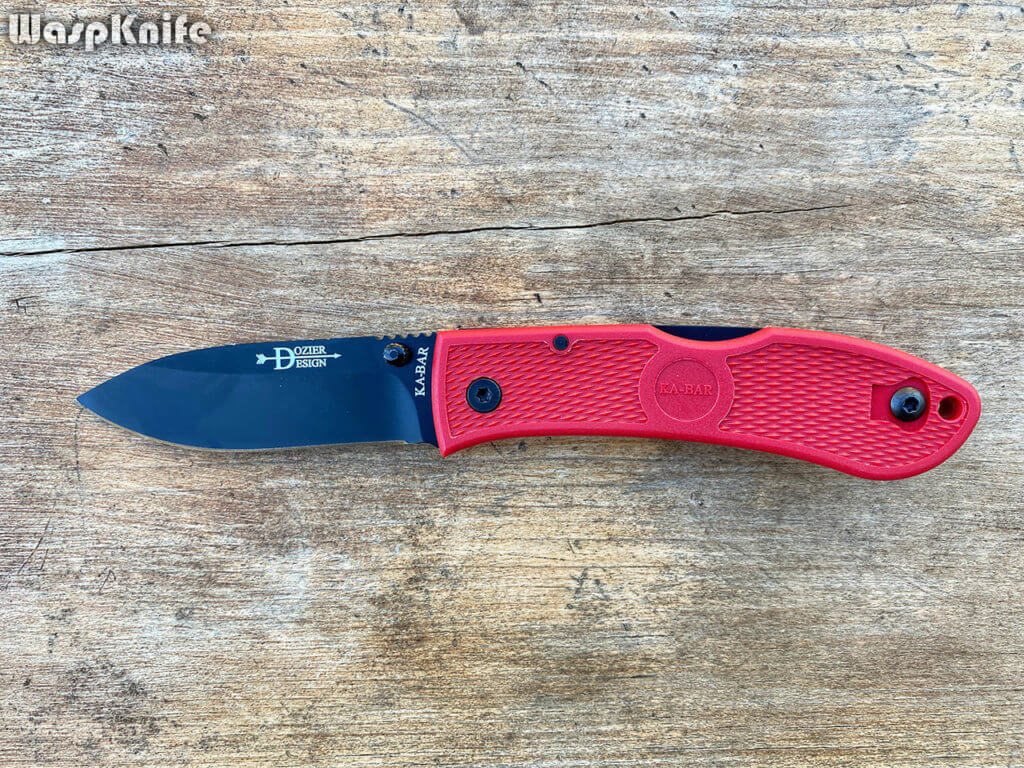
Key Features:
- Incredibly lightweight
- Ambidextrous
- Multiple colors and blade shapes
Specs:
- Blade length- 3”
- Blade steel- AUS8
- Weight- 2.2oz
The Ka-Bar Dozier series is another fantastic budget option that fits just about anyone’s budget. The Dozier series is known for its lightweight but durable Zytel handle scales and classic lock back locking mechanism. If you’re just getting your first knife, then Dozier is a good pocket knife one that will last a lifetime without breaking the bank.
3. CRKT Squid: Best Small Pocket Knife
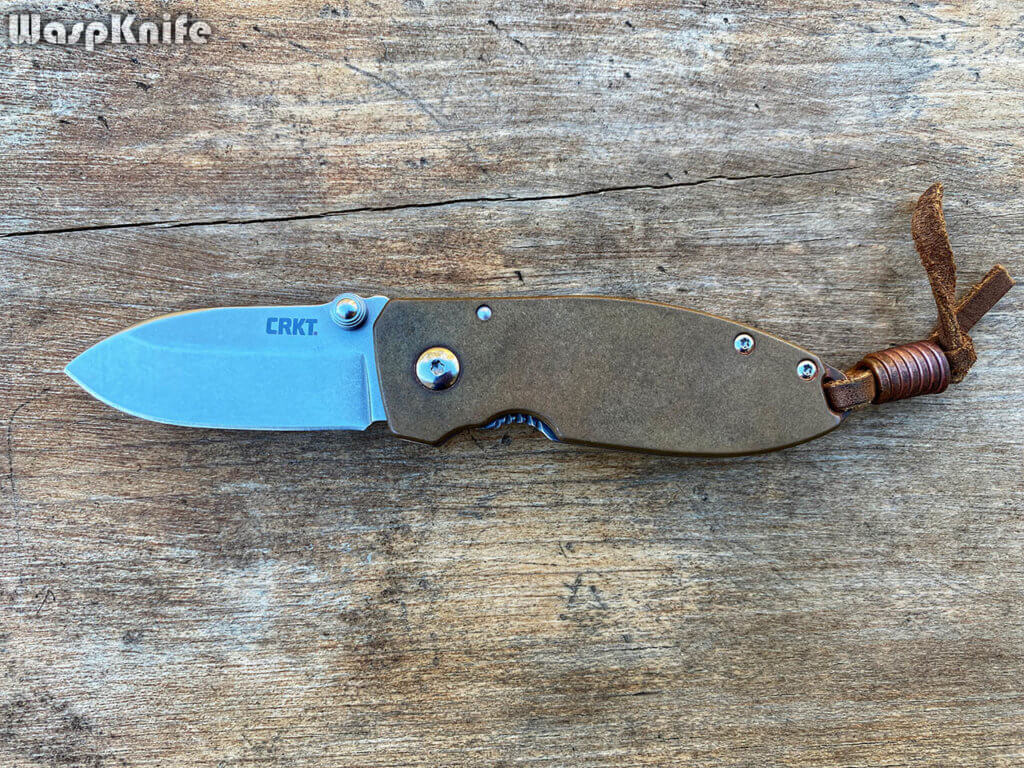
Key Features:
- Legal in most states
- Customizable with aftermarket scales
- Lightweight Framelock
Specs:
- Blade length- 2.2”
- Steel- 8CR13MOV
- Weight- 3.5oz
The CRKT Squid’s value to price ratio is hard to beat in the small edc knives range. You get an incredibly strong frame lock in a compact package that will stand up to years of use. This small pocket knife is the production version of popular designer Lucas Burnley’s custom Squid without the much higher price tag.
You get all of the same love that Burnley puts into his designs with CRKT’s reputation and warranty. The Squid is the best mini pocket knife under 3 inches.
4. Civivi Elementum: Budget Flipper Knife
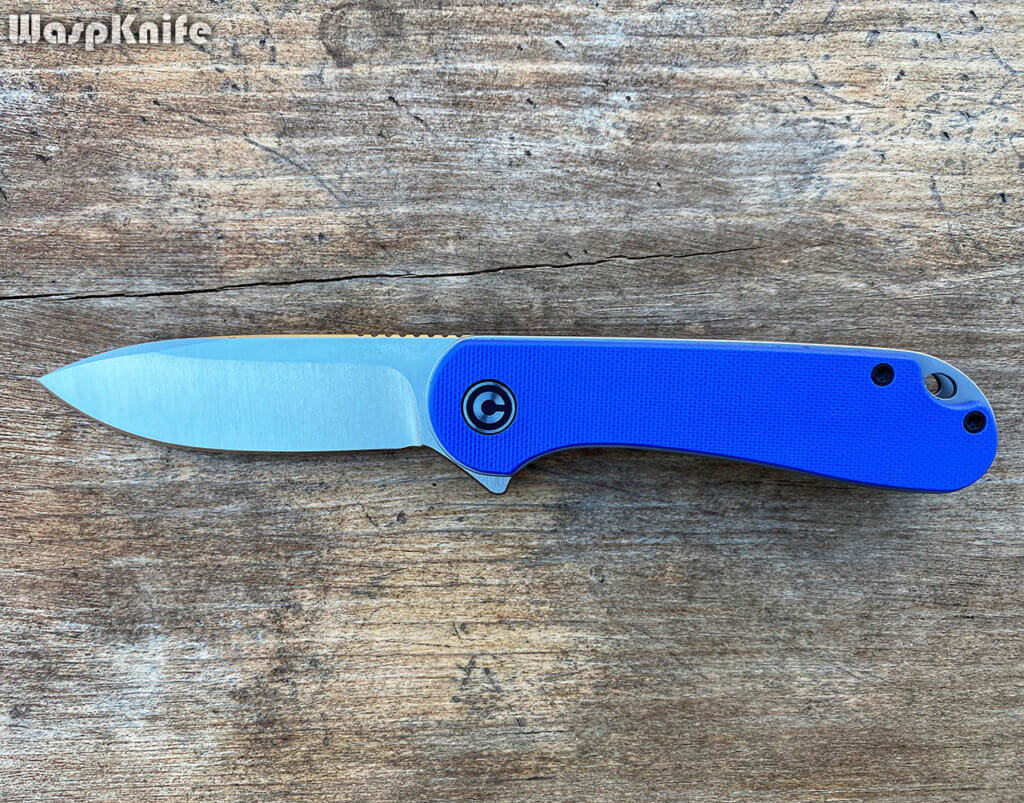
Key Features:
- Incredibly smooth action
- Multiple color options
- Deep carry pocket clip
Specs:
- Blade length- 2.9”
- Blade steel- D2 (premium steels available)
- Weight- 2.9oz
The Civivi Elementum has become one of the most popular budget-friendly blades since its release. With a buttery smooth action, durable D2 steel, and multiple handle scale options there is an Elementum for everyone.
The Elementum is simple.
A 3” drop point blade, conventional liner lock, and a neutral handle that fits a wide variety of hand sizes. If you’re looking for a smooth and sleek flipper at a price tag that is much lower than the knife’s quality, check out the Elementum.
5. Kizer Vanguard Begleiter: Value EDC Knife

Key Features:
- Thin design fits easily in the pocket
- G10 scales provide high traction
- Premium blade material and multiple handle scale options
Specs:
- Blade length- 3.5”
- Blade steel- VG10
- Weight- 3.8oz
The Begleiter was a knife I put on the back burner for a while after its release. When I finally got one in hand I wished I had purchased it much sooner.
The fit and finish, incredibly sharp VG10 blade, and Kizer’s warranty are a great buy for anyone looking for a more slender, sharp pocket knife.
Kizer’s Vanguard series takes Kizer’s more premium designs and makes an affordable overseas produced version that is more attainable to the masses without sacrificing any quality. The Begleiter is no different.
6. Kershaw Blur

Key Features:
- Assisted opening
- Designed for hard use
- DLC-coated blades
Specs:
- Blade length- 3.4”
- Steel- 14C28N (premium steels available)
- Weight- 3.9oz
The Blur has been around for years and is still one of Kershaw’s best sellers for good reason. Designed for hard use and tactical applications, the Blur features a DLC (diamond-like coating) blade on many models.
In addition to an almost-indestructible blade, the Blur’s handle features Kershaw’s patented Trac-Tec scale inserts that provides incredible traction when using the knife. Add Kershaw’s lifetime warranty and you have a near-perfect option for your next edc knife.
7. Spyderco Delica 4/Endura/Endela
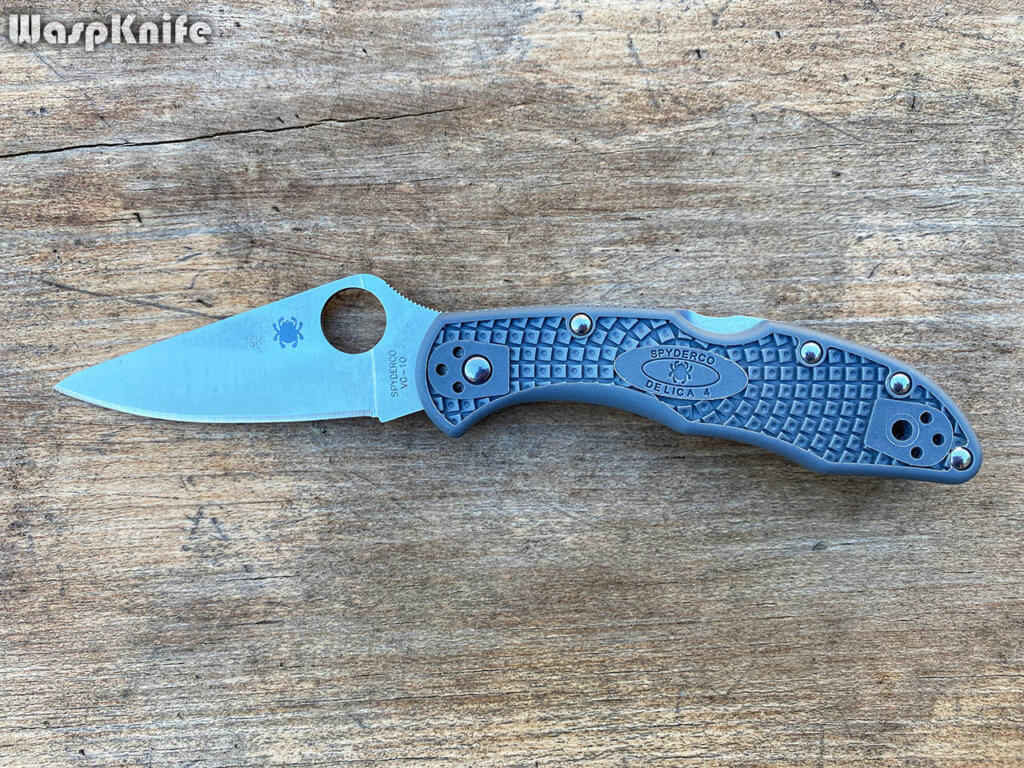
Key Features:
- Completely ambidextrous pocket clip (tip-up, tip-down; right or left-handed)
- Lightweight yet durable
- Multiple color options and exclusive sprint runs
Specs:
Delica 4
- Blade length- 2.8”
- Blade steel- VG10 (premium options available)
- Weight- 2.5oz
Endura 4
- length- 3.75”
- Steel- VG10 (premium options available)
- Weight- 3.6oz
Endela
- Blade length- 3.4”
- Blade steel- VG10 (premium options available)
- Weight- 3.1oz
Between these three options from Spyderco, you are sure to find one that will suit your preferences. The Endela is the newest in the Spyderco lineup after many knife enthusiasts begged for a size between the Delica and Endura.
Features include the classic Spydie Hole, FRN handle scales, and VG10 steel. Add in some jimping on the spine of the blade and a four-way position pocket clip and you have a very versatile pocket knife that will last a lifetime.
8. Cold Steel Recon 1
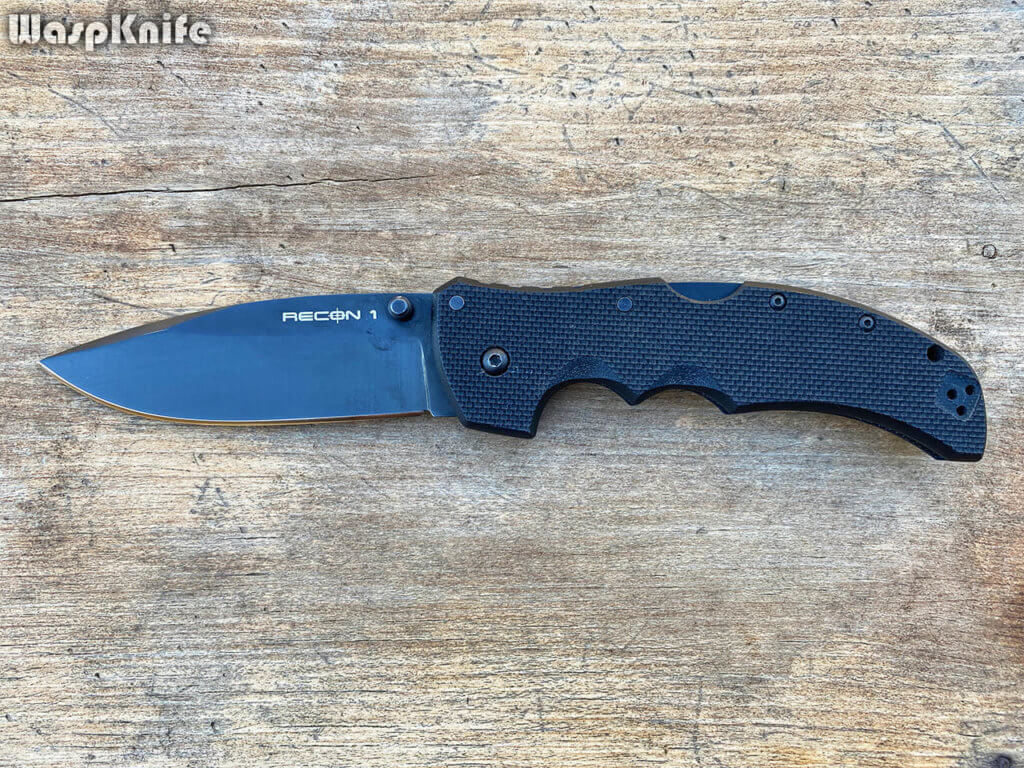
Key Features:
- One of the strongest locks on the market
- Ambidextrous pocket clip
- Designed for hard use
Specs:
- Blade length- 4”
- Blade steel- CPM-S35VN
- Weight- 5.0oz
The Cold Steel Recon 1, and pretty much any Cold Steel knife for that matter, is best known for its incredible Triad Lock that turns a basic folding pocket knife into a fixed blade for all intents and purposes. The Recon 1 is a BEAST of a blade. With a DLC-coated S35VN blade, aggressive G10 handle scales. The pocket knife comes with a reversible pocket clip the Recon 1 is the perfect tactical knife to add to your carry rotation.
9. Kershaw Knockout
Key Features:
- Made in USA
- Wide blade size
- Two methods of deployment
Specs:
- Blade length- 3.2”
- Blade steel- 14C28N (premium options available)
- Weight- 3.8oz
The Knockout is another hard use folder from Kershaw that combines a lightweight aluminum handle with a wide blade perfect for slicing tasks. The Knockout features both a flipper tab as well as dual thumb studs to give the user multiple deployment options.
And with the patented SpeedSafe technology, the Knockout comes out lightning fast with its assisted opening mechanism!
10. Benchmade Bugout/No products found.
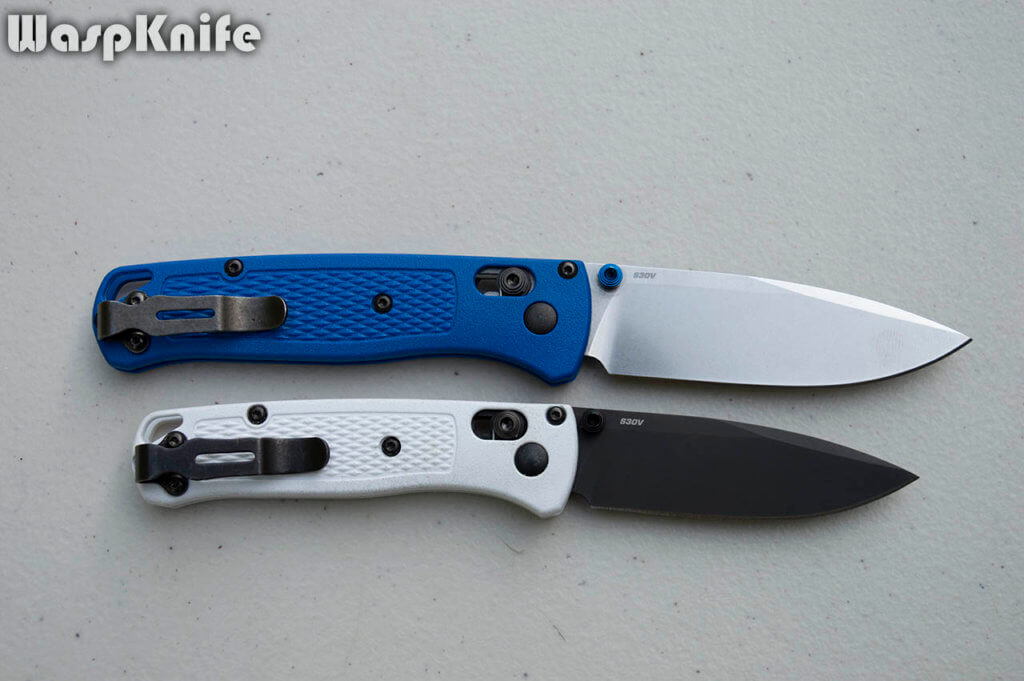
Key Features:
- Completely ambidextrous
- Made in USA
- Extremely lightweight
Specs:
Bugout
- Blade length- 3.2”
- Blade steel- CPM-S30V
- Weight- 1.8oz
Mini Bugout
- length- 2.8”
- Steel- CPM-S30V
- Weight- 1.5oz
The Bugout series is quickly growing to be Benchmade’s one of the top-selling pocket knives of all time.
The Bugout can handle any EDC task with ease and comes in such a lightweight package that it almost disappears in your pocket until you need it.
The Bugout is the lightest Benchmade knife.
11. Spyderco No products found./Paramiliary 2
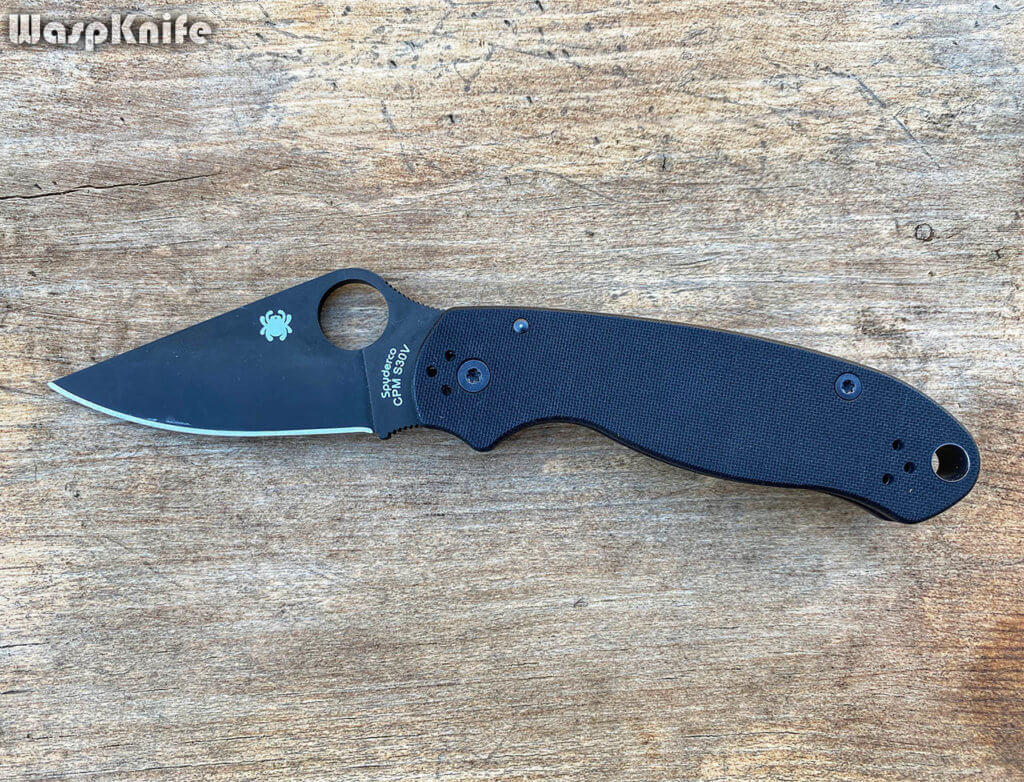
Key Features:
- Completely ambidextrous
- Made in USA
- Smooth action
Specs:
Para 3
- Blade length- 3”
- Blade steel- CPM-S30V
- Weight- 3.4oz
Paramilitary 2
- length- 3.4”
- Steel- CPM-S30V
- Weight- 3.7oz
The Paramilitary series has been a long-standing staple in the knife community. With a lineup that will make collectors of the series go broke in a matter of minutes, there is an option for everyone.
Spyderco is known for its exclusive sprint runs of the Paramilitary series featuring premium steels and customized handle scale materials. The patented Spydie Hole blade deployment is a must-have for any knife collector!
12. Hogue Deka
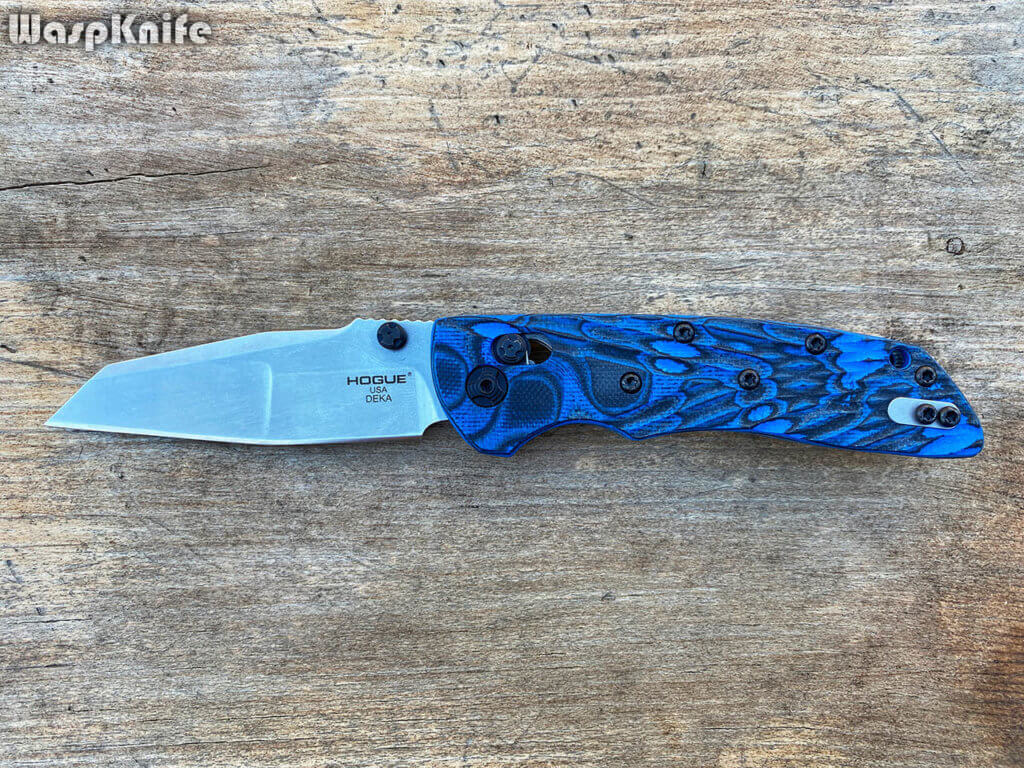
Key Features:
- Crossbar lock
- Premium steel blade
- Made in USA
Specs:
- Blade length- 3.2”
- Blade steel- CPM-20CV
- Weight- 2.4oz
Fairly new to the crossbar lock market, the Hogue Deka has been a popular option in the lightweight pocket knife game for the year 2024.
With premium CPM-20CV steel, multiple blade shapes, and a killer G10 handle scale the Deka is sure to please even the pickiest of knife collectors.
13. No products found.
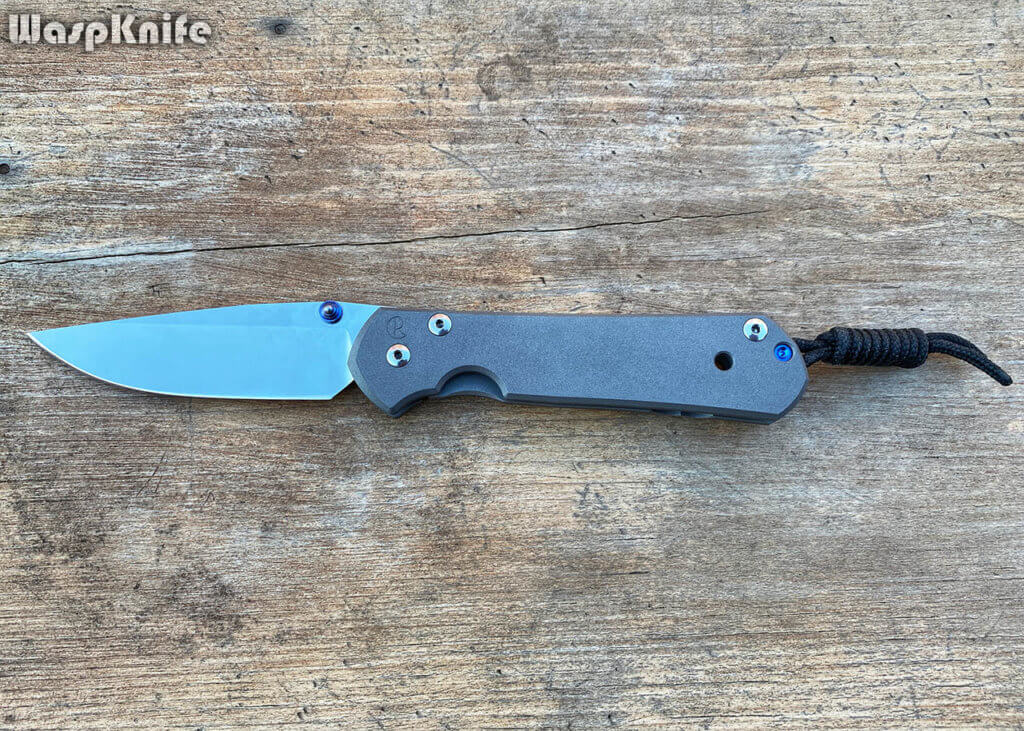
Key features:
- Made in USA
- Premium materials
- Smooth action
Specs:
- Blade length- 3.3”
- Blade steel- CPM-S35VN
- Weight- 4.7oz
The Chris Reeves Sebenza 21 (Large) has been a long-standing favorite amongst high-end knife lovers around the world.
With premium materials and attention to detail, anything from Chris Reeves is sure to last a lifetime and stand up to years of abuse. All Chris Reeves’ knives are backed with a lifetime warranty and come with free “spa treatments” if you’d like to send your favorite folder in for cleaning or a re-sharpen.
14. Chaves Ultramar Redencion 229
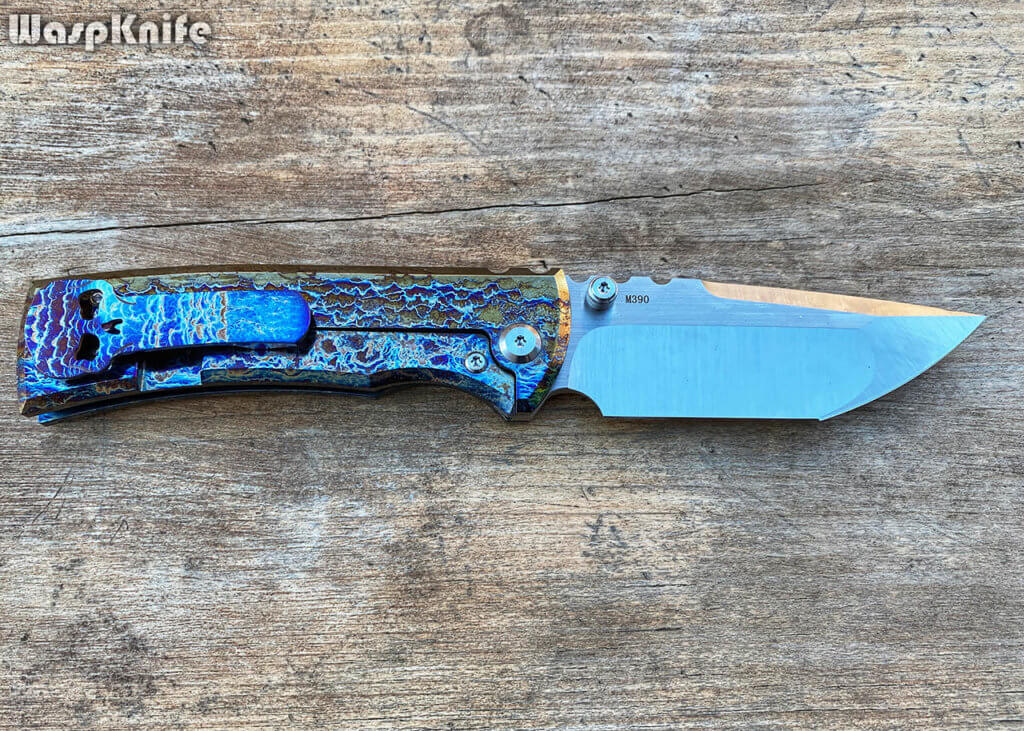
Key features:
- Premium materials
- Titanium framelock
- Multiple variations
Specs:
- Blade length- 3.6”
- Blade steel- Bohler M390
- Weight- 6.4oz
Chaves Knives are similar to CRK in the fit and finish and materials and also come with lifetime warranties. The 229 is a heavy-duty, American-made titanium framelock featuring M390 steel and a beautiful finish.
With a smooth action and a deep carry clip, the 229 is hard to beat for the price you’re paying.
Best Traditional Pocket Knives
Traditional pocket knives have been a long-standing favorite amongst knife admirers for decades. With recent trends swaying back and forth from year to year, traditional knives have made a huge comeback in 2019 and 2020. Here are three options for your viewing pleasure!
15. Opinel No. 7
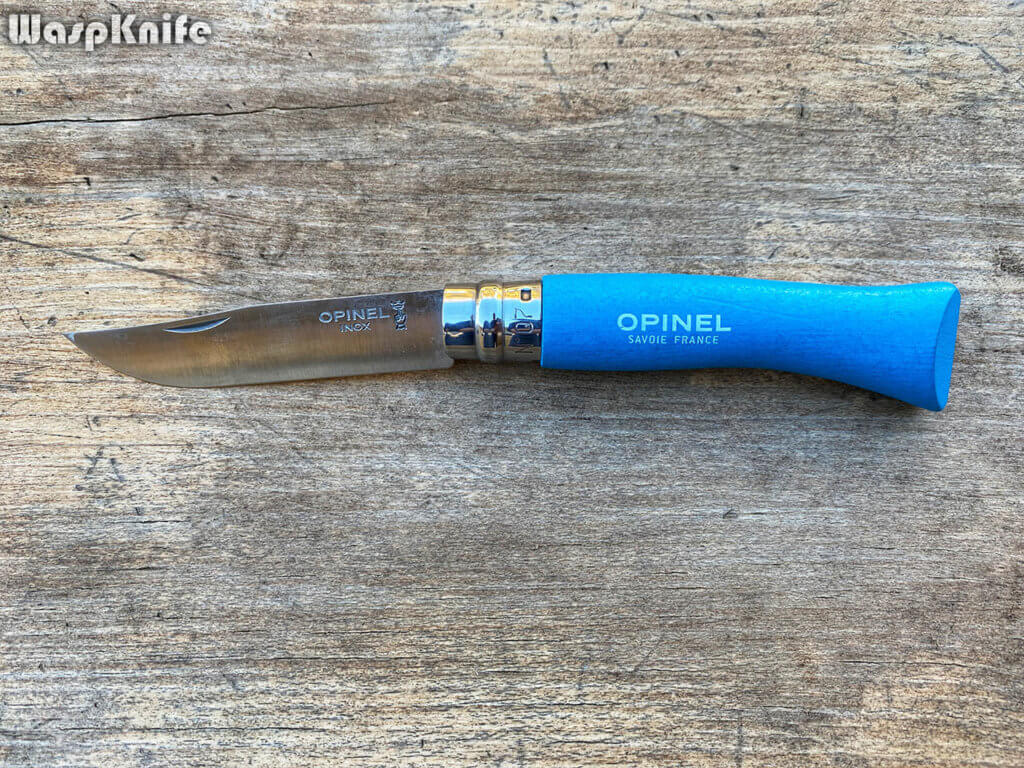
Key features:
- Lightweight
- Inexpensive
- Extremely easy to modify
Specs:
- Blade length- 3.2”
- Blade steel- High carbon steel
- Weight- 1.6oz
The Opinel series of traditional knives are some of the best inexpensive options for any traditional pocket knife lover.
Opniel’s come in a variety of blade lengths and handle materials and are extremely easy to modify to fit your specific style preferences.
Opinel is the first choice for any first knife lover in your knife as well at such a great price.
16. Case Barlow

Key features:
- Made in USA
- Classic design
- Comes in multiple color options
Specs:
- Blade length- 2.4”
- Blade steel- Tru-Sharp
- Weight- 2.1oz
Case is one of the first brands that comes to mind when I think of a “traditional” knife.
Case has been around for over one hundred years and is still popular amongst knife collectors to this day. These thin, lightweight, and dependable blades will last you a lifetime. Case Barlow is one of the best slip joint knives.
I still have several Case knives passed down from my grandfather and cherish them to this day!
17. Benchmade Proper

Key features:
- Made in USA
- Premium materials
- Positive “click” on detent
Specs:
- Blade length- 2.8”
- Blade steel- CPM-S30V
- Weight- 2.3oz
The Proper is everything you want in a gentleman’s carry.
With Micarta scales, a premium S30V satin-finished blade, and Benchmade’s lifetime warranty, the Proper is hard to beat. The action on the Proper is also incredibly smooth with a positive “click” for its half stop in addition to its fully-opened position.
What To Look For Before Buying a Pocket Knife?
As mentioned throughout the article, everyone has a personal preference when it comes to knives.
Some like fixed knives while others prefer folding knives. But the first thing I ask when someone comes to me for advice on a knife is what the budget is going to be. Once that is determined, everything else will fall into place.
After determining how much you want to spend on your knife, there are several features you want to decide on, which we’ll cover in-depth shortly.
Things like blade shape, blade length, blade steel, weight, deployment, and lock type are all considerations you should keep in mind when choosing.
The knives in this article have all been chosen due to their track record and value for price, but they are also popular amongst the vast majority of those in the Knife Community.
Through years of research, there are certainly common themes that have made these knives notable across the world.
Fully Serrated Vs Partially Serrated Vs Plain
There are three main types of blade designs which have their own unique advantages and disadvantages. Once you have narrowed down what tasks you find yourself needing a knife for you can make an informed decision on which edge type works best for you.
Plain Edge
Plain edge blades are the most common and excel in basic everyday tasks such as opening letters and packages, basic food prep, and any other task that requires a “push cut.”
Fully Serrated Edge
Fully serrated edges are popular for difficult materials such as rope, seatbelts and other thicker materials. Full serrated blades are known to hold their edges longer than plain edges, but it comes at a price.
Partially Serrated Edge (Combo Edge)
A partially serrated edge is the best of both worlds for a lot of people. You get the extra bite for cutting tough materials with the serrations (typically found towards the handle) and the precision of the plain edge all wrapped into one knife. You can easily sharpen the plain edge portion of your blade for your EDC tasks and the serrated portion will hold an edge until you have mastered sharpening.
What Size Should I Pick For My Pocket Knife?
Small blades (under 2.75 inches)
Smaller blades are useful in many urban situations due to their ability to blend in with the environment. Smaller blades are also more accessible to people around the world due to some states’ or country’s knife laws.
Medium blades (2.75-4 inches)
The vast majority of pocket knives fall within the “medium” category. A blade between 3 and 4 inches is ideal for just about any day to day task you will find yourself in without being too large to carry in the pocket comfortably.
Once you get into the “large” category you start having to think about your pants and how deep (literally) your pockets are!
Large blades (over 4 inches)
Large blades are just plain cool. Sure you can get the job done with a CA legal sub 2” blade for most EDC tasks, but when you whip out a 5.5” Cold Steel Rajah II you’re going to get some impressive gasps from the crowd.
Larger blades tend to stick out of the pocket more and can be uncomfortable depending on your setup but can typically handle larger tasks a lot easier than smaller blades.
What are the ideal Blade Shape Types For Your Pocket Knife?
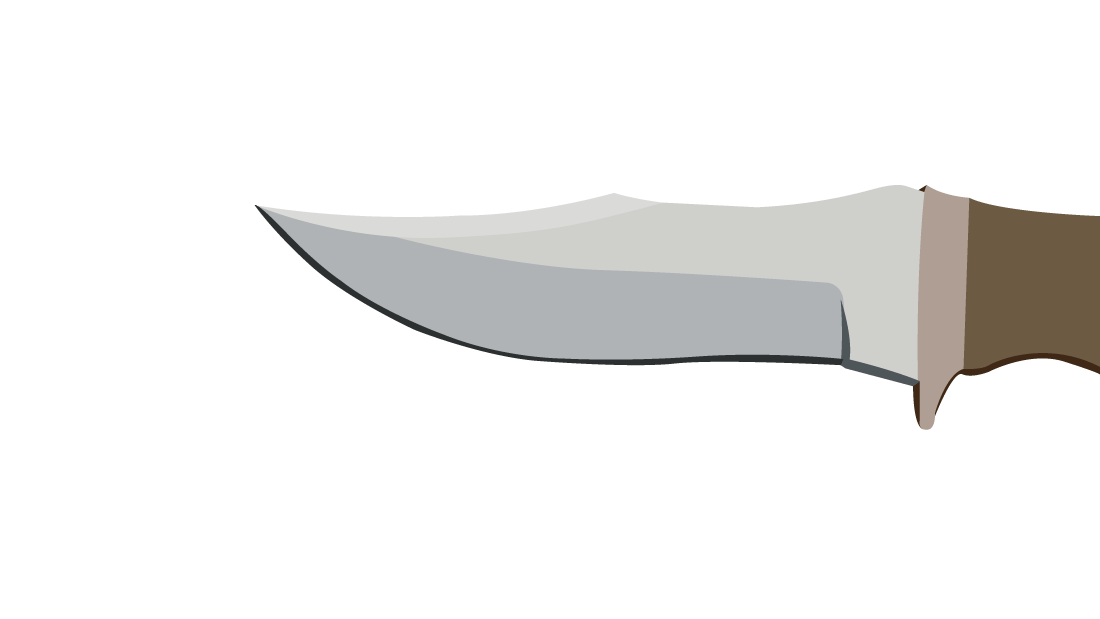
Clip Point
Clip Points are extremely traditional by design and are great for delicate work that you need a precise tip to control. Clip point blades have an upswept cutout towards the tip of the blade which makes it easy to break while working on more difficult tasks.
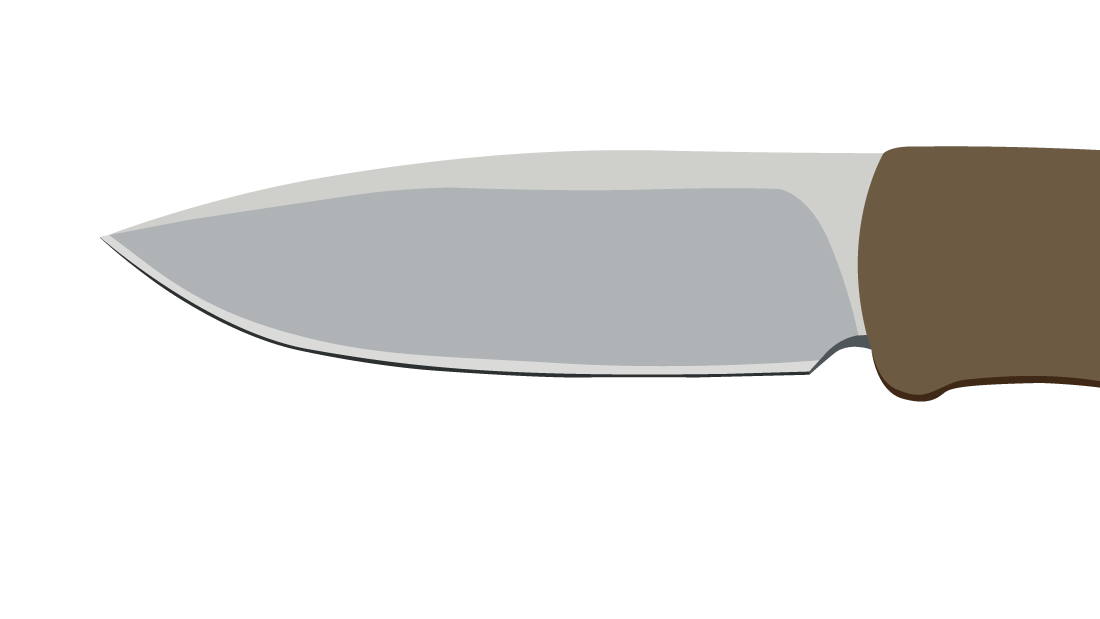
Drop Point
Drop Point blades are similar to Clip Points; they have a straight spine almost to the very tip of the blade where it takes a slight downward curve. Drop Point blades have stronger tips than Clip Point blades due to having a thicker spine.
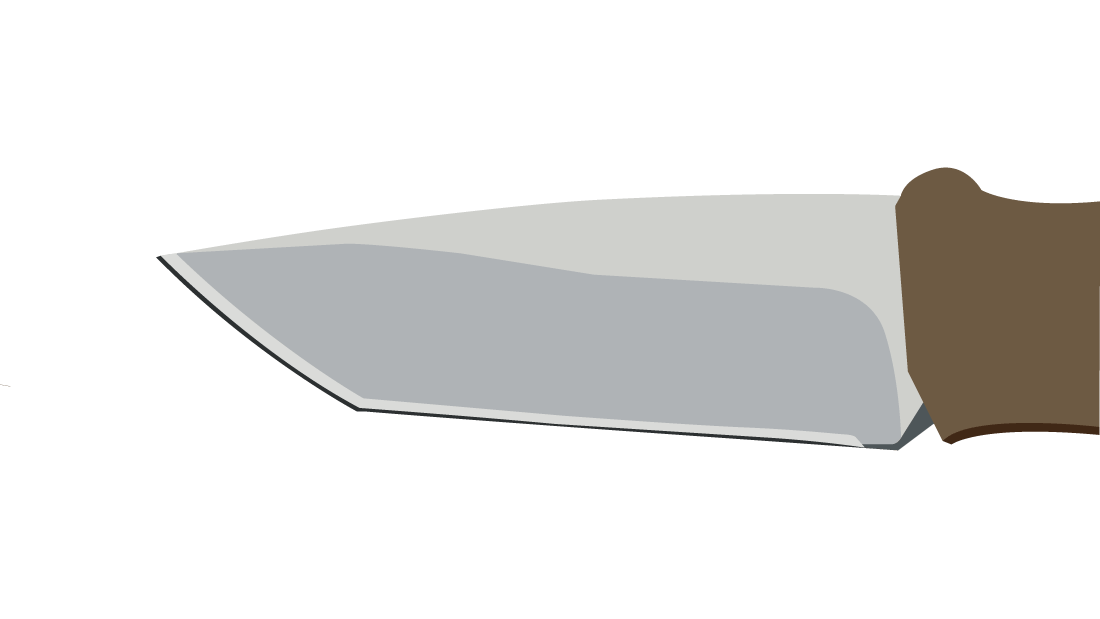
Tanto
Tanto blades come from the traditional Japanese blade designs and are tactical by nature. Tanto Point blades have a sharp-angled tip which is extremely durable and perfect for piercing tasks. Compared to traditional Clip Points or Drop Points the Tanto blade may not be the best at slicing and dicing but if you need maximum penetration look no further than the Tanto.
What Knife Blade Steel to Pick?
For this section, I will focus on the main four factors to choosing a good blade steel:
- Edge Retention
- The Toughness Of The Steel
- Ease Of Sharpening and
- Corrosion Resistance
Great Budget Steels
440C
440C, and its various family members in the “440” family is a great budget steel. It is relatively easy to sharpen in addition to being a moderately tough steel. 440’s retention and corrosion resistance is mediocre at best, however. When used properly and maintained, 440C will give you a great blade for a long time.
8CR13MOV
Along with the 440 family of steels, 8CR13MOV also has several variants. A Chinese-produced steel, 8CR13MOV performs similarly to 440C at a higher level when properly heat-treated and ground correctly.
AUS-8
AUS-8 is similar in makeup to 8CR13MOV, but excels in ease of sharpening. The downside to AUS-8 is its retention. Compared to 8CR13MOV, you will need to sharpen AUS-8 twice as often. Its toughness and corrosion resistance is similar to both of the aforementioned budget steels.
Great Mid-Range Steels
D2
If you are looking for a blade that you can use and abuse that will hold an edge for a long time, look no further than D2. D2 steel is incredibly tough and has great retention, but it lacks in corrosion resistance and ease of sharpening. As long as you maintain your knife, D2 will serve you well for a long time.
VG-10
VG-10 is a great steel with a higher corrosion resistance than its D2 counterpart. It is also relatively easy to sharpen and holds an edge well. VG-10 can be brittle and is not near as tough as D2.
1095
1095 is a very high carbon steel that is found in many fixed blade knives and a variety of folders. 1095 is incredibly tough and easy to sharpen, but lacks greatly in corrosion resistance. 1095 will also hold an edge for a decent while, but make sure you keep it well oiled if you want to prevent rust from forming.
Great High-End Steels
CPM-154CM
CPM-154CM is a great entry level to higher end steels. Its attributes are relatively even across the board; ease of sharpening and corrosion resistance is better than many budget and mid-range steels. You also gain better edge retention and corrosion resistance compared to lower end steels.
CPM-S30V
CPM-S30V is an incredibly popular steel and for good reason. Its retention and corrosion resistance is incredible while maintaining decent toughness and ease of sharpening. Its newer variant S35VN is very similar.
CPM-S35VN
CPM-S35VN is an upgraded version of S30V with slightly better toughness and ease of sharpening when you get into the chemical makeup between the two steels. Retention and corrosion resistance of edge is incredible on S35VN and it is relatively tough compared to lower-end steels.
Great Premium Steels
M390
M390 is becoming increasingly popular and is arguably the best steel you can find currently. M390 has incredible retention, is highly resistant to corrosion, and is also very tough. The only downside to M390 is it is a pain to resharpen. This is a downfall easily remedied by more experience with sharpening, or simply sending your knife back to the manufacturer for a quick “spa treatment.”
CPM-20CV
CPM-20CV will be one of the sharpest blades you will find right out of the box, but have fun trying to sharpen it. Its ease of sharpening is one of the lowest you will find on the totem pole. However, its corrosion resistance and toughness greatly outweigh its stubbornness to be resharpened. Most blades you will find with CPM-20CV have great warranties and customer service so sending it in to get it professionally resharpened will be a non-issue.
Elmax
Elmax steel is one of the highest ranking steels for edge retention and maintains its popularity with its ability to be sharpened relatively easily. It may not be as easy as the aforementioned premium steels, but after some time and experience you can put a wicked edge on it. Elmax also has decent corrosion resistance and is incredibly tough.
What are The Different Type of Handle Materials?
Aluminum
Aluminum scales are lightweight and come in a variety of colors. Aluminum is also able to be anodized in order to customize your knife even more. Aluminum is durable as well.
G-10
G-10 scales are vastly popular and come in countless different designs. G-10 is a mix of both fiberglass and resin which comes together to form a durable, corrosion-resistant material that can be shaped and formed in a multitude of thicknesses and textures. G-10 maintains its texture no matter the condition- wet, oily, dry, or icy.
Carbon Fiber
Carbon fiber is another popular choice that has become a golden standard when done correctly. Carbon fiber is lightweight and durable like G-10 but lacks in overall texture comparatively. Carbon fiber is typically found in a woven pattern and is often found in higher-end knives due to its slightly higher cost to produce.
Stainless Steel
Stainless steel scales are similar in variety like aluminum but are slightly heavier and more durable.
Wood
Wood scales give the knife a classic look but are also popular on a lot of folding blades. Wood scales are predominantly found on slipjoints and other traditional designs.
What are The Different Opening Mechanisms?
Manual-Opening Blade
Manual knives are those that require force to open. Whether by thumbstuds, a flipper tab, or a Spydie hole, manual knives are the most common in today’s age.
Switchblade or Automatic
Automatic knives can be sub-categorized into two main groups: OTF’s (out-the-front) and side Automatics. OTF’s are literally what the name implies; a blade that is concealed within the handle of the knife and “fires” out of the top of the handle. OTF’s are highly regulated in certain states but have become incredibly popular in recent years due to their high fidget factor.
Side-opening automatics typically have a button located on the handle of the knife and the blade opens as most manual actions do. Instead of using a thumb stud to open the knife manually, you press a button and the knife opens automatically.
Assisted-Opening
Assisted Opening knives are sort of a mix between manuals and automatics. Assisted opening knives are designed with a thin torsion bar which assists in opening the knife once you start to manually open it. Assisted opening knives are generally legal in most states but it is always best to check your local knife laws to determine what is allowed and what isn’t.
What Are The Different Locket Mechanisms?
- Liner Lock
- Slipjoint
- Lockback
- Frame Lock
- Cross Bar Lock
- Compression Lock
- Ring Lock
What Pocket Clip Is Right For Me?
Pocket clips are an essential feature of many folding knives, providing a convenient and secure way to carry your blade. With various types available, it’s essential to choose the right one for your needs and preferences. Here’s a brief guide to the most popular types of pocket clips, ranked by popularity, and their benefits:
Standard (straight) pocket clip:
This basic design is a straight, flat clip that attaches to the knife handle. It’s the most common and popular type found on folding knives and is suitable for most users. The standard pocket clip offers a secure grip on your pocket but may not provide the deepest carry.
Ideal for: Casual users and those who prefer a simple, no-frills design.
Deep-carry pocket clip
As the name suggests, deep-carry pocket clips allow your knife to sit deeper in your pocket, providing a more discreet and secure carry. These clips have gained popularity for their curved or bent design, ensuring that the knife handle is flush with the pocket edge.
Ideal for: Users who prioritize discretion and security, or those in professional settings where a visible knife might be frowned upon.
Reversible pocket clip
Reversible pocket clips can be attached to either side of the knife handle, catering to left-handed or right-handed users. This feature is particularly popular for ambidextrous knife designs.
Ideal for: Left-handed users or those who prefer the versatility of switching the carry side.
Wire pocket clip
These clips are made from a thin, flexible wire, offering a minimalistic and lightweight carry option. Wire pocket clips are unobtrusive and often more comfortable to wear than bulkier designs.
Ideal for: Users who prioritize comfort and minimalism, or those with lightweight knives.
Milled pocket clip
Milled pocket clips are custom-made from a single piece of metal, often titanium or stainless steel. They are more expensive than other types but offer a higher level of craftsmanship, durability, and aesthetics.
Ideal for: Knife enthusiasts and collectors who appreciate the artistry and quality of custom-made accessories.
Frequently Asked Questions
Are pocket knives allowed on airplanes?
Knives of any kind are not allowed to be carried on your person or in carry-on luggage, but are allowed in checked luggage.
Is a pocket knife considered a weapon?
Technically speaking, anything can be used as a makeshift weapon. However pocket knives are tools, and more people should treat them as such. Some state laws define knives of any kind a weapon depending on blade length or overall length.
Is it illegal to carry a knife under 18?
As mentioned previously in the article, it is always best to refer to your individual states’ laws regarding knives. However, generally speaking it is not illegal to carry a pocket knife under the age of 18. Minors are excluded from purchasing knives though.
How much should you spend on a knife?
Budget is completely relative to the individual user and can vary greatly. Some knives are mission-specific and are more expensive than an everyday carry blade for generally cutting tasks. How much you spend on a knife depends on your style preferences and budget. No two people will have the same answer.
Are expensive knives worth it?
In general, yes. Generally speaking more expensive knives carry with them premium materials, better fit and finish, and a better warranty. Expensive is a relative term but in most cases you will be able to tell the aforementioned differences between a $20 pocket knife and a $200 pocket knife.
Can I Carry My Pocket Knife in Any State?
Knife laws can vary widely from state to state, so it is always best to check your local laws before deciding on your next favorite folder. Many states allow blades up to 3” to be carried “concealed” or in your pocket, but states like California have smaller blade length restrictions. California only allows knives with up to a 2” blade length to be carried.
